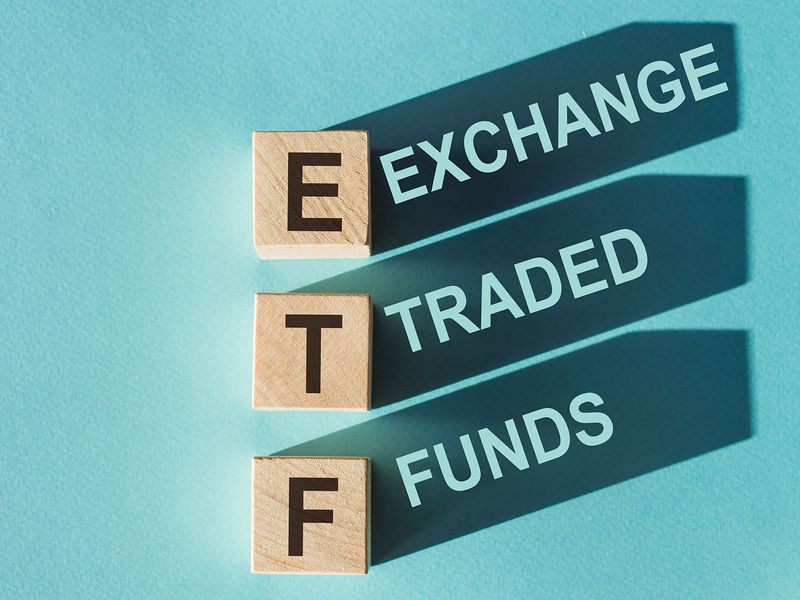Is Technical Analysis Prophetic or Preposterous? We Asked 7 Crypto Traders
The death cross. Just say it out loud. It doesn’t sound good. And it’s not. In fact it’s quite bad.
For most of October, analysts in the bitcoin market were warning that the death cross was coming – using what’s known in the trading business as technical analysis.
Technical analysis, or TA for short, is the art of divining future price movements by studying charts detailing how various assets have traded in the past. Patterns are discovered. Those patterns are compared with patterns that occurred previously. The assumption is that the past patterns will hold in the future, providing price predictions and a good chance to profit.
A death cross, in the practice of TA, occurs when the line tracking an asset’s price average over the prior 50 days falls below the line tracking its 200-day moving average. The appearance of a death cross is considered the start of a bearish trend: The last time it happened in the bitcoin market, in March 2008, prices tumbled by more than half over the next nine months.
So, it was considered unusually bearish when this year’s death cross finally appeared on Oct. 25, or thereabouts. Bitcoin’s price closed at $8,662 that day, and over the next few weeks it would tumble more than $2,000. Some analysts say the price drop was caused by a crackdown on cryptocurrency speculation in China. But TA believers say the whole thing was apparent from the charts.
“Once the death cross happens, we’re in a situation where the moving averages are screaming bearish,” says Big Chonis, a pseudonymous 41-year-old Massachusetts man with 43,000 Twitter followers and a separate, subscription-based TA feed. He asked that his real name not be used, he said, to avoid diluting the power of the Big Chonis brand, but added in a phone interview that he typically nets $3,000 to $4,000 a week as a full-time trader, relying primarily on technical analysis.
The concept that traders could reliably make money – or avoid losing it – from watching when a blue line might cross a yellow line seems like phony-baloney to many investors in traditional finance (not to mention to journalists and other observers of crypto trading). But in bitcoin markets, TA is ubiquitous. Binance, one of the world’s biggest crypto exchanges, said in a Nov. 22 research report that TA was the second-most commonly followed investment strategy in markets for digital assets, after high-frequency trading.
Joe DiPasquale, CEO of BitBull Capital, argues that TA helps break through the hype that often drives crypto prices high or low.
“The recent surge at the end of October, due to the Chinese media hype, is a good example of an unsustainable speculation-driven move that has now returned to our previously indicated support around $8,100,” he said. “Technical analysis is what led us to believe that the high reached after Chinese President Xi Jinping spoke was ephemeral and would retrace back to just above $8,000.”
TA was originally developed for markets where trading has a long history and data is bountiful. For stocks, TA outperforms analysis based on business fundamentals, including factors like earnings growth, according to an extensive 2015 study by three Israeli researchers. The finding held for investment horizons of one to 12 months.
True believers say TA is even more important in crypto markets since nobody can really yet confidently pinpoint the fundamental value of bitcoin, invented by a small cadre of libertarian computer coders just 11 years ago. Is it a store of value, an inflation hedge, a digital form of gold? The future of money? Or simply the rewards for the owners and operators of the computers that are helping to keep the world’s biggest blockchain running? It might be all of the above.
“Absent some real fundamental news, people rely on charts and price and volume,” said Greg Cipolaro, a former Citigroup stock researcher who now helps run the cryptocurrency-analysis firm Digital Asset Research. “It’s always kind of been a dark art.”
With little else to go on, traders put their faith in the charts. They say to themselves, and anyone else who will listen, that classical technical analysis would tell us right now that the price of bitcoin is about to break a lot lower — like, in the next week or so, because this candle chart looks like this, and that candle chart looks like that; in other words, you should wait a little longer before you go back into your accumulation phase. Even Big Chonis acknowledges there are limits to TA’s usefulness, or at least its application. In his Twitter feed, he says, he tries to point out “notable things,” or patterns that he sees in the charts. But he acknowledges that he’s not quite as prolific with the price predictions: “You’re right in saying that you’re not seeing me say buy, buy, buy, sell, sell, sell all the time, because it’s all subjective.”
What’s interesting is that even many bitcoin investors who scoff at the chart-auguring, preferring, say, the long-term digital-gold narrative, usually keep an eye on the charts, which can become self-fulfilling. So many people are looking at the same price points as key levels of support and resistance – TA-speak for when bitcoin is believed to be unable to penetrate some invisible moving price ceiling, or when it can’t really go any lower – that the market often behaves accordingly.
For example, many traders set up their systems to automatically sell out of a position if the price of bitcoin suddenly falls below a certain threshold; the exercise is known as a stop-loss order and roughly translates to, “Get me out, now, before I lose any more money.” Once those stop-loss orders get tripped, the price move accelerates, and pretty soon a lot of novices trading bitcoin futures are getting “REKT.” That’s crypto-speak for when heavily leveraged traders get liquidated due to a margin call. Rapid selling as those liquidations take effect just drives the price down faster, and bitcoin has just proved yet again how volatile it can be.
“If you understand what everyone else is doing, you understand the trade even better,” said David Martin, chief investment officer at Blockforce Capital in San Diego. “It’s basically technical analysis on technical analysis.”
CoinDesk spoke to seven professional crypto traders and analysts about TA. Here’s what they said:
Greg Cipolaro, Digital Asset Research:
I’m not a believer in technicals. If I found something that was consistent and would work, I would use it, but since I haven’t, it just seems like you’re talking about throwing around triangles. Absent some real fundamental news, people rely on charts and price and volume, and in that respect it’s more like FX or commodities short term-trading, but to me it’s just not where I play. It’s always kind of been a dark art. There are times when you see support and resistance, such as with even numbers – $9,000, $10,000. When it breaks through those levels, then all of a sudden the price breaks up or down, but that’s because a lot of people are sort of keying in on the same thing.
Joe DiPasquale, BitBull Capital:
At BitBull, technical analysis is a key part of our active management, and works well in concert with news analysis to reveal probable movement patterns and downside/upside limits. Since crypto markets are highly volatile and generally speculation-driven, technical analysis provides key indicators of price movements, especially support and resistance zones. The recent surge at the end of October, due to the Chinese media hype, is a good example of an unsustainable speculation-driven move that has now returned to our previously indicated support around $8,100. Technical analysis is what led us to believe that the high reached after Xi Jinpeng spoke was ephemeral and would retrace back to just above $8,000. Using technical analysis enables us to trade around crypto’s volatility, buying low and selling high with confidence. For example, in the last year (11/1/18-11/1/19), Bitcoin has returned 44 percent, while BitBull’s Opportunistic Fund has returned 101 percent, about 2.3 times more.
David Martin, Blockforce Capital:
When I my first got into crypto back in 2016, I was doing it purely from a technical perspective. I didn’t understand bitcoin or what it could do, but I just wanted to trade it because it had a lot of volatility. That was largely based on support and resistance, wave cycles and fibonacci retracements. We don’t use it for the fund. We’re mostly using machine-learning algorithms. But what I see is that technical analysis actually works better in crypto because you don’t have the fundamental analysis that you have in equities and other asset classes. What else are you going to trade off of? For example, if you’re trading Apple, you might have so many outside macro factors that influence the price of the stock. Technical analysis could be one part but not the only. In crypto, it’s still retail dominated, so everyone’s looking at chart patterns. So if you understand what everyone else is doing, you understand the trade even better. It’s basically technical analysis on technical analysis. Once you figure out, where does everybody think there’s support, where does everybody think there’s resistance, you can set your trade up based on how everyone else is reading the market.
Traders care about technical analysis very much. They’re in the market for a short period of time; investors less so. When we’re making a trading decision here, we look at the macro environment, we look at the fundamentals, and then we look at the charts. We do have to look at the technicals because there are less clear fundamentals in crypto. By and large, this is something that is almost a self-fulfilling prophecy. If you look at technical analysis as a tool that a lot of traders are looking at, and everybody’s looking at the same indicators, they’re seeing the same things and adjusting their trading strategies accordingly.
I am a firm believer in technical analysis and how it can translate to bitcoin charting and identifying where we are in the market structure. Bitcoin normally goes sideways; there’s a range most of the time, and bitcoin price action can be very boring. Because this is a thin market, there isn’t a lot of retail-driven price action that’s pushing this. It wouldn’t take more than a couple million market-buy to push the price several hundred dollars, just based on the fact that the retail market is so thin. I like to take a broader 50,000-foot view, look at the daily chart, the 3-day, the weekly, to get an overall sense of where we are in the market. I accept the fact that if I’m looking at a certain timeframe on my chart, and I say, Hey, if the indicator hits this level, it’s a good buying opportunity, but then if it keeps falling, that tells me I might be on the wrong timeframe.
Dan Matuszewski, former Circle trader now a partner at CMS Holdings:
I tend to be of the mindset that it’s mostly hocus pocus. We do want to know where people are placing their stops, but when we trade we’re really just trying to find inefficiencies in the market and arbitrage those out. We’re doing that more than say, OK, bitcoin just crossed the 50-day moving average. That’s just not our game.
Nicholas Merten, DataDash trader:
In the short term I believe that technical analysis is completely irrelevant. The only kind of TA that would be relevant is naked trading, where you’re using support and resistance as levels where you look to enter and exit, on the hourly, or the daily chart – looking to see when the last lows and highs were set, and if you can see consistency. If you can see certain candles always topping out at specific price, say $8,000 multiple times, if you’re long bitcoin, it may be a good time to take some profits or possibly close your position. When it comes to indicators, I only use them on weekly timeframe. It is much easier to gauge momentum on longer term timeframe; the MACD on the weekly chart is so good at being able to predict general bottoms and tops. For day trading, it’s really not an effective strategy.
Disclaimer Read More
The leader in blockchain news, CoinDesk is a media outlet that strives for the highest journalistic standards and abides by a strict set of editorial policies. CoinDesk is an independent operating subsidiary of Digital Currency Group, which invests in cryptocurrencies and blockchain startups.
This article is intended as a news item to inform our readers of various events and developments that affect, or that might in the future affect, the value of the cryptocurrency described above. The information contained herein is not intended to provide, and it does not provide, sufficient information to form the basis for an investment decision, and you should not rely on this information for that purpose. The information presented herein is accurate only as of its date, and it was not prepared by a research analyst or other investment professional. You should seek additional information regarding the merits and risks of investing in any cryptocurrency before deciding to purchase or sell any such instruments.








